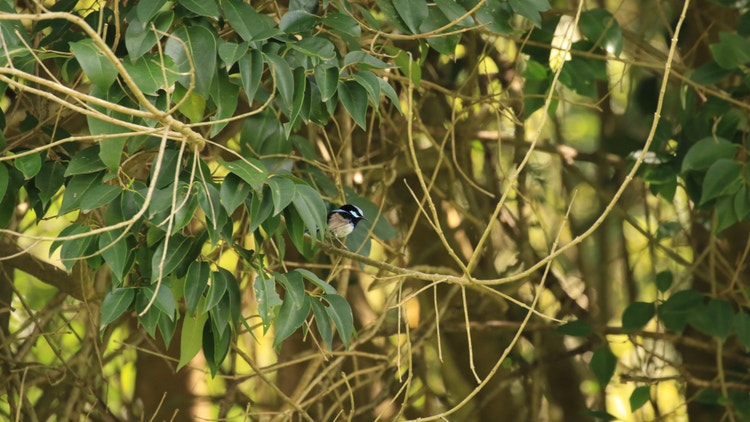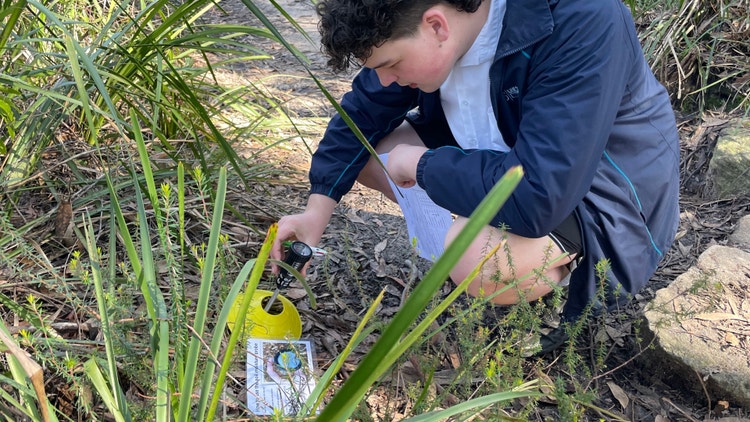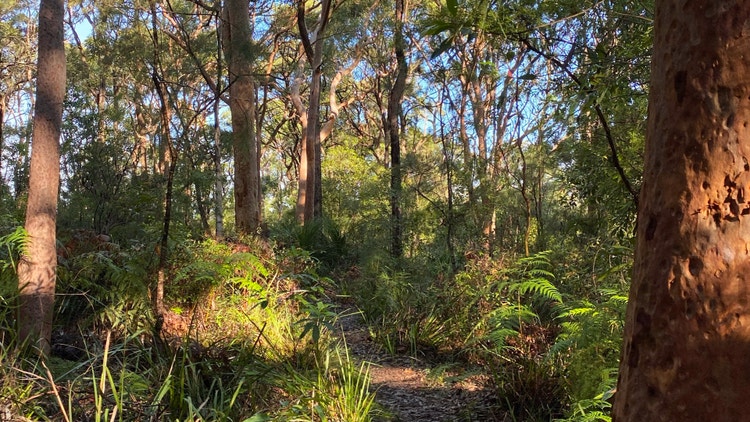

Program
This excursion aligns with Module 4 of the NSW Stage 6 Earth and Environmental Science syllabus. Students will collect primary data at two sites, explore the impacts of introduced species on ecosystems, and evaluate management strategies by the City of Ryde Council and other agencies.
Inquiry questions
- What are the effects of introduced species on the environments in the Field of Mars Reserve?
- How have human activities allowed the spread of these introduced species?
- How can the effects of introduced species be controlled and mitigated in the future?
- What methodologies and data sources are required for a valid and reliable survey of the introduced species at the Field of Mars Reserve?
Fieldwork
Introduced species case studies
Students will locate and observe evidence of introduced plants and animals in the Field of Mars Reserve including lantana, small leaf privet and the European red fox. Secondary sources and graphic organisers will be used to organise findings relating to environmental impacts and management.
Impact of introduced plants on the environment - comparative study
Equipped with fieldwork instruments and other tools, students will conduct a comparative study of two sites to quantify and quality the impact of introduced plants on the environment. Students will sample biotic factors including fauna evidence, vegetation structure, foliage cover and plant species, and abiotic factors including soil properties and moisture and atmospheric conditions.
Location

Field of Mars Reserve
Location information - including risk assessment and risk management advice, bus map and track overview.
Essential information
| Cost 2025 |
DoE school $26 per student – GST free Non-gov school $36 per student – GST free, minimum charge $750 |
| Cost 2026 |
DoE school $27 per student – GST free Non-gov school $37 per student – GST free, minimum charge $750 per class |
| Classes | Maximum 2 classes |
| Bring |
View Preparing for your excursion. Bring worksheet, writing equipment, clipboard, medications, low-waste food, water bottles, sunblock, hat and raincoat in a backpack. Sports uniform recommended. This program requires students to use a mobile device to record data. Inform the centre if devices are not permitted. |
| Welfare |
Rugged bushwalking, not wheelchair accessible. May not suit recently unwell participants. For medical or special needs notify staff prior to program. |
| Extreme or wet weather | Program may be modified, postponed or cancelled due to predicted extreme temperatures, bush fire danger, heavy rainfall, high winds or dust storms. |
| Booking policy | Confirm student numbers and classes 7 days in advance. |
| Cancellation fee |
Less than 30 working school days – $600 Less than 7 working school days notice – full cost Weather or fire danger cancellation – $0 |
| Worksheet |
Schools are responsible for printing student worksheets. |
| Teacher resources | Teacher programming folder |
| Supporting resources |
Human impacts and introduced species - Google site |
| Pre-visit learning | Fieldwork techniques YouTube playlist |
| Time | Activities |
| 9.45 - 10.15 | Introduction in Field of Mars centre |
| 10.15 - 10.30 | Food break and toilets |
| 10.30 - 12.45 | Fieldwork - primary data collection |
| 12.45 - 1.15 | Food break and toilets |
| 1.15 - 2.15 |
Data processing Secondary source analysis Conclusion and depart |
Stage 6 Earth and Environmental Science (2017)
Module 4 Human impacts
Outcomes
A student:
- develops and evaluates questions and hypotheses for scientific investigation EES11/12-1
- designs and evaluates investigations in order to obtain primary and secondary data and information EES11/12-2
- conducts investigations to collect valid and reliable primary and secondary data and information EES11/12-3
- describes human impact on the Earth in relation to hydrological processes, geological processes and biological changes EES11-11
Content
Effects of Introduced Species
Inquiry question:
How do introduced species affect the Australian environment and ecosystems?
Students:
-
outline the biotic and abiotic effects of introduced species
-
conduct an investigation into a local introduced species, including:
- reason for introducing the species
- biotic and abiotic effects of the species
- area affected by the species
- human impacts that favour the introduced species
- control or mitigation methods
- economic impact of the species
- different views about the value of and/or harm caused by the introduced species, including the views of Aboriginal and Torres Strait Islander Peoples
Earth and Environmental Science Stage 6 Syllabus © NSW Education Standards Authority (NESA) for and on behalf of the Crown in right of the State of New South Wales, 2017



